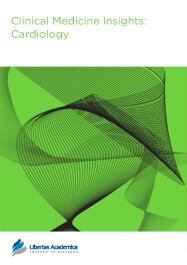

Publication Date: 07 May 2013
Type: Original Research
Journal: Clinical Medicine Insights: Cardiology
Citation: Clinical Medicine Insights: Cardiology 2013:7 87-95
doi: 10.4137/CMC.S11501

During ablation of re-entrant ventricular tachycardia (VT) 3-dimensional mapping systems are now used to properly delineate the scar tissue and aid ablation of scar-related VT. The aim of our study was to outline how the mode of ablation predicts success and recurrence in large scar-related VT. When comparing patients with recurrence and patients with no recurrence, univariate analysis showed that number of ablation lesions (28 ± 8 vs. 12 ± 8, P = 0.01) and more linear ablation lesions rather than focal lesions (P = 0.03) were associated with long-term success. We demonstrated that more extensive ablation lesions and creation of linear lesions is associated with better success rate and lower recurrence rate during ablation of large scar-related ventricular tachycardia.
PDF (2.15 MB PDF FORMAT)
RIS citation (ENDNOTE, REFERENCE MANAGER, PROCITE, REFWORKS)
BibTex citation (BIBDESK, LATEX)
XML
PMC HTML

The review process in Libertas Academica journals is prompt, objective and rigorous. The entire process is smooth and clear and all the editorial staff are cooperative and professional. Published papers are of top clinical and scientific value, and high metrics reflect the excellent quality of Libertas Academica's journals.

All authors are surveyed after their articles are published. Authors are asked to rate their experience in a variety of areas, and their responses help us to monitor our performance. Presented here are their responses in some key areas. No 'poor' or 'very poor' responses were received; these are represented in the 'other' category.See Our Results
Copyright © 2014 Libertas Academica Ltd (except open access articles and accompanying metadata and supplementary files.)
Facebook Google+ Twitter
Pinterest Tumblr YouTube